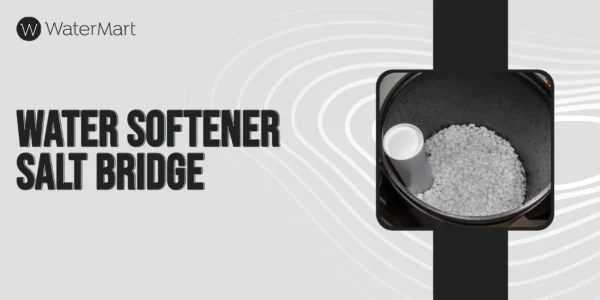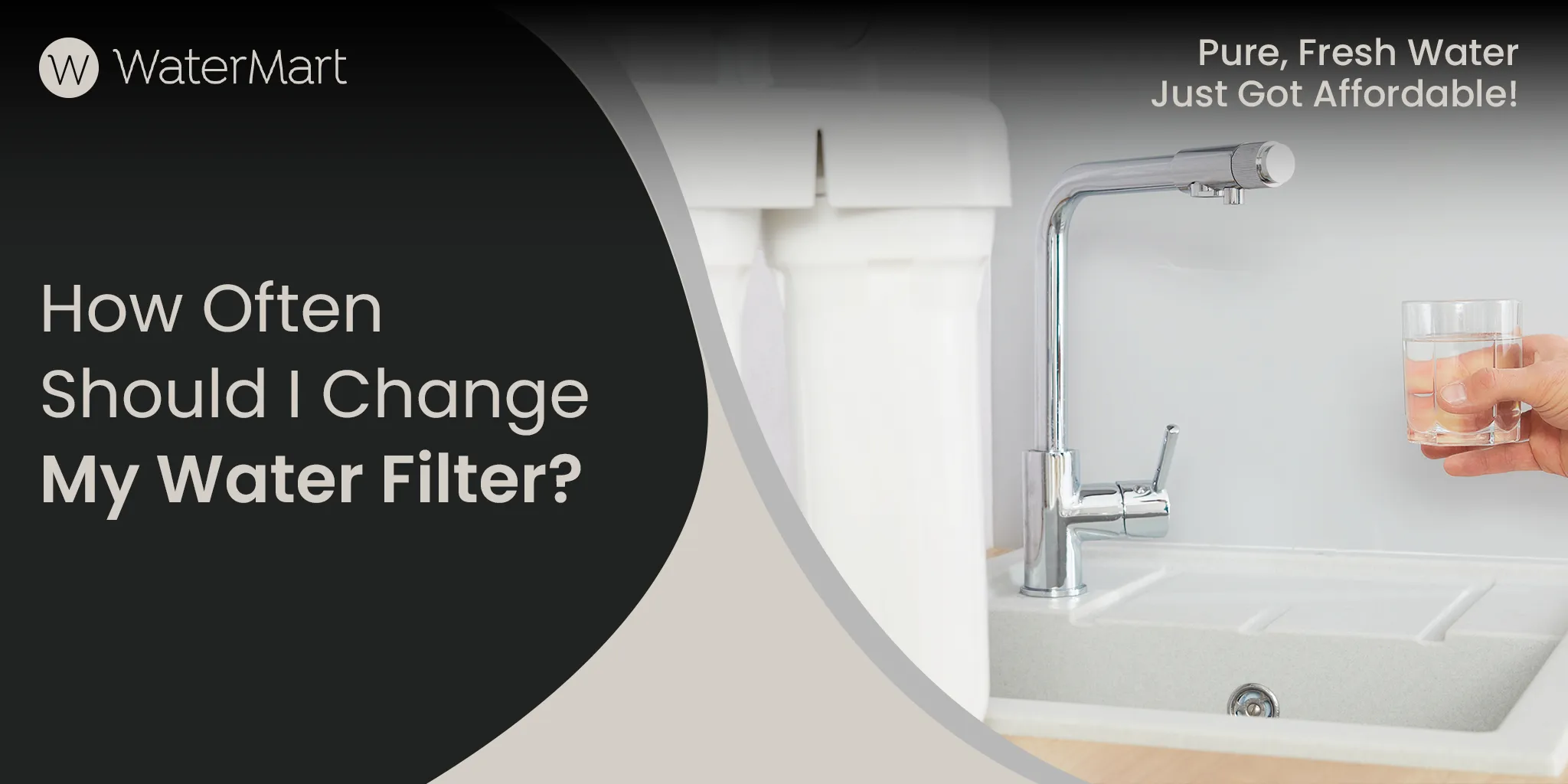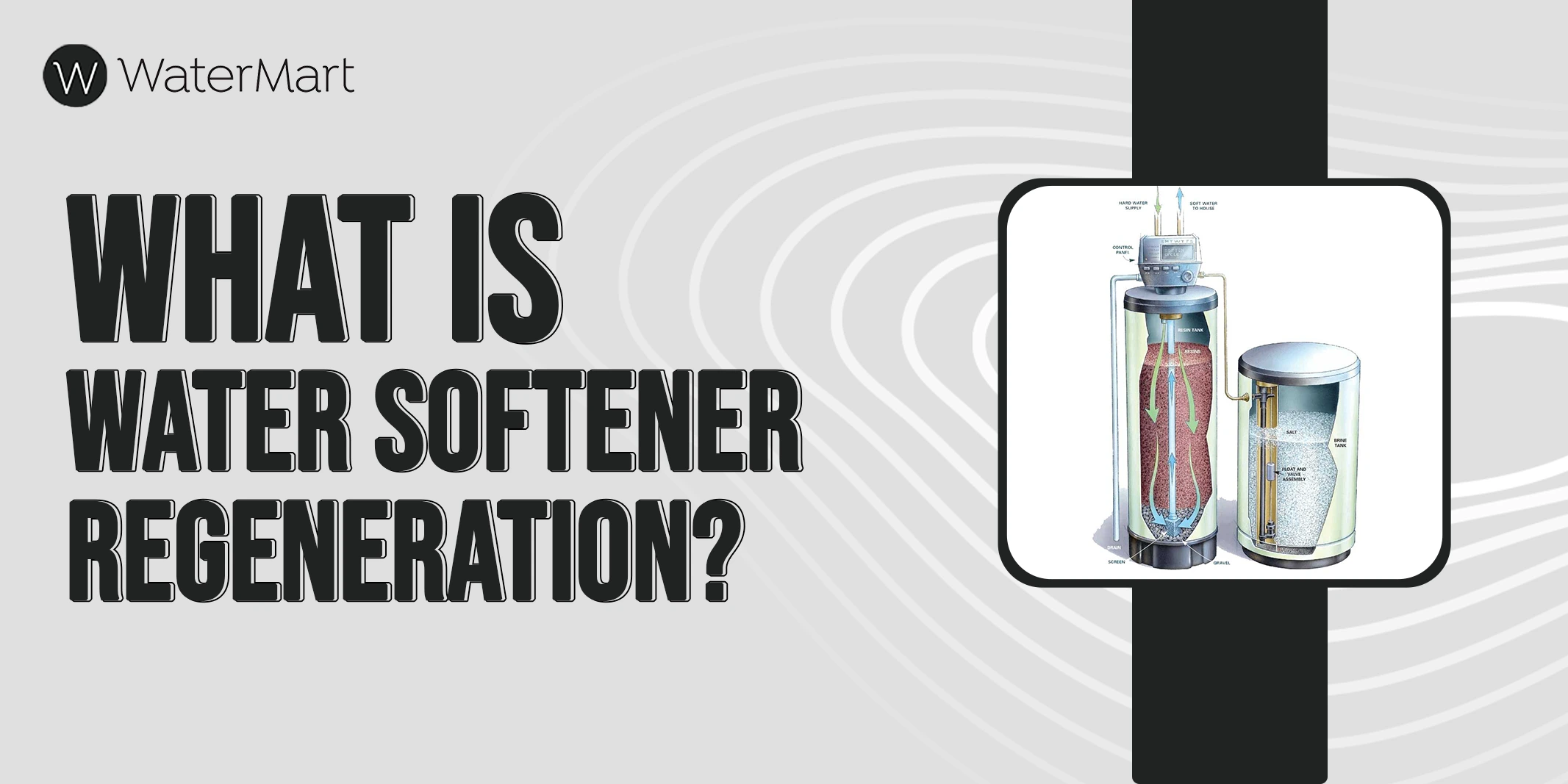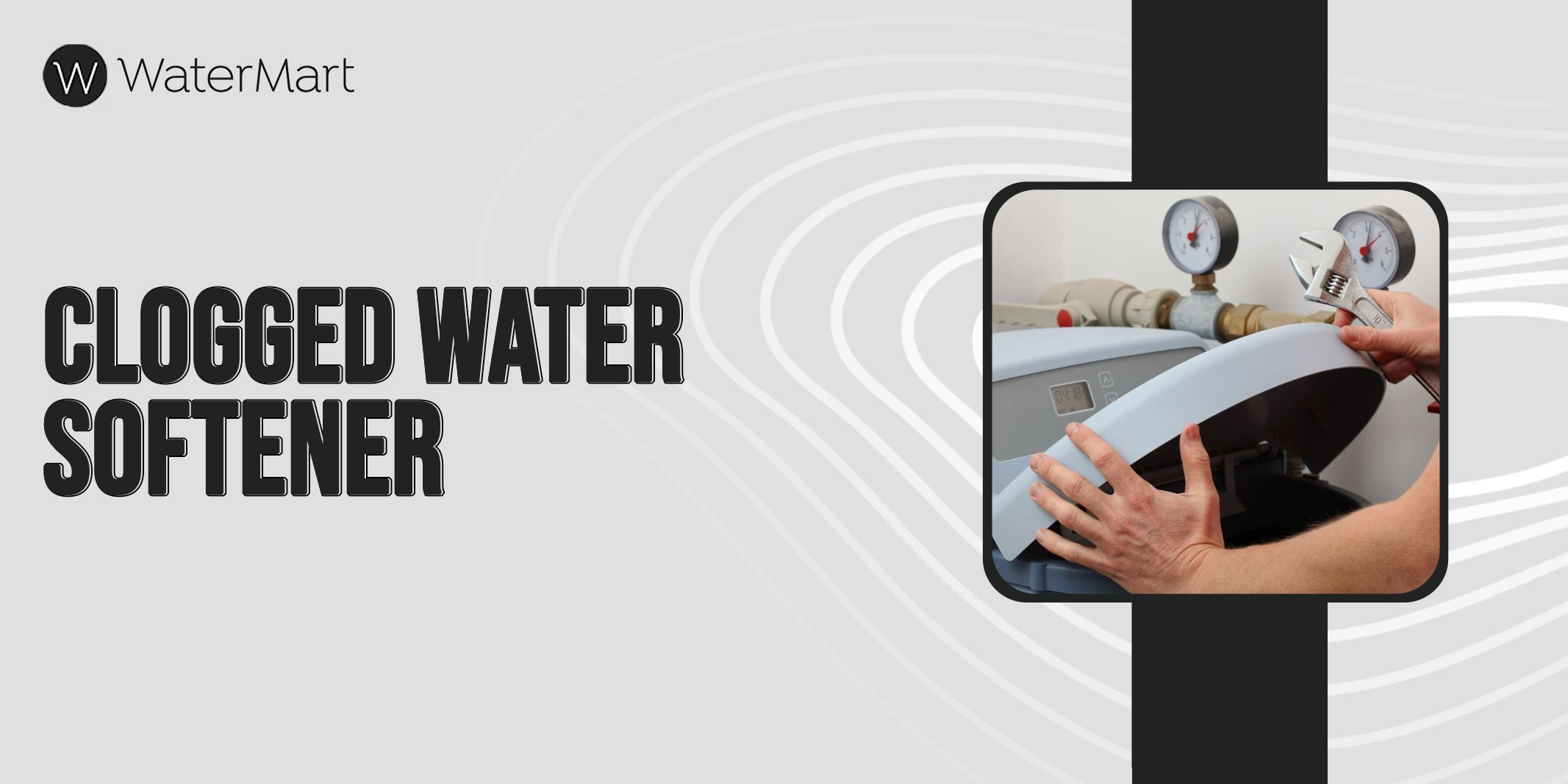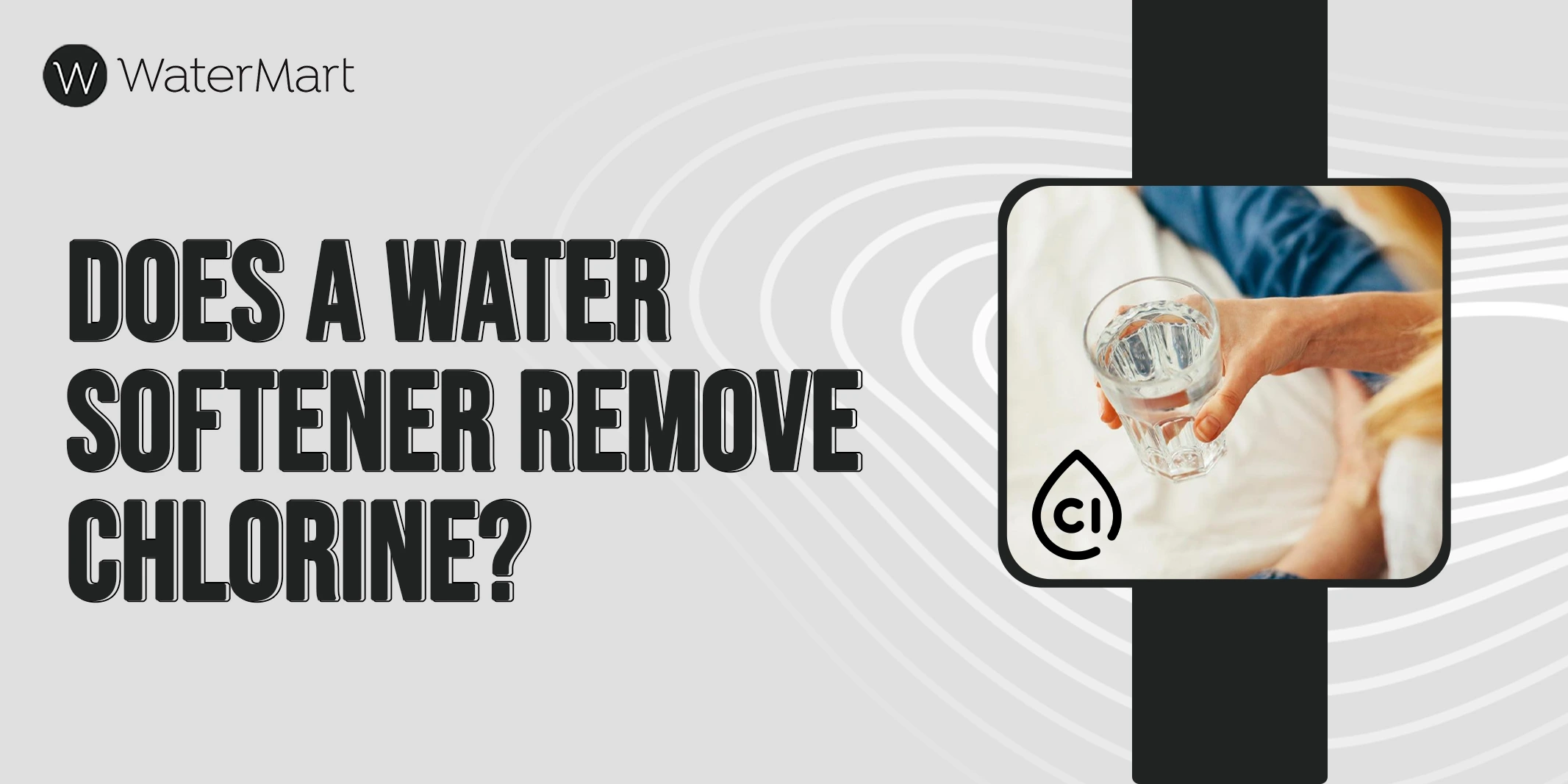Your cart is currently empty!
How To Fix A Water Softener Salt Bridge
If you feel your water softener isn’t working as it should or notice all your hard water signs returning, it’s time to check the brine tank for the water softener salt bridge.
But what is a salt bridge in a water softener?
Before diving into what a salt bridge in a water softener is, you should have complete knowledge about what a water softener system is and how it works.
Well, a salt bridge is a solid layer of salt that usually forms inside your brine tank due to high humidity, an overflowing brine tank, or infrequent maintenance. This layer of clumped salt, however, seems harmless, but is the main culprit behind your water softener problems.
A salt bridge covers the entire width of your water softener tank and prevents water from dissolving the salt, resulting in ineffective regeneration cycles and ultimately delivering hard water. Therefore, dealing with salt bridges before they cause havoc and mess with your whole water-softening system is crucial.
In this article, we’ll discuss the causes of salt bridging and ways to prevent it in the future.
Stay with us!
Causes Of Water Softener Salt Bridge
Salt bridges are not always your or your water softener’s fault. Sometimes, trivial things such as humidity can contribute to saltwater formation.
However, many other factors contribute to water softener bridging, including:
High Humidity
Humidity is the main culprit behind water softener bridging because moisture in the air causes the salt to clump in the brine tank before it dissolves in the water. If you’re located in a hot and humid climate, your softener is more prone to getting a salt bridge.
Wrong Salt Type
Not all salts are created for water softeners. Sometimes, using the wrong salt type in the water softener results in faster recrystallization and water softener salt bridge formation.
Note: Always choose the salt type recommended by your manufacturer.
Overfilled Brine Tank
An overfilled brine tank or water softener full of water is one of the major causes of salt bridge formation because it hinders the salt dissolution process, promoting bridge formation.
Infrequent Maintenance and Refills
The infrequent cleaning and maintenance of your water softener may accumulate undissolved salt particles and impurities at the bottom of your tank, contributing to salt bridge formation.
Keep in mind that you need to maintain your water softener from time to time.
How Do I Know If I Have A Salt Bridge?
One of the most important signs you have a salt bridge is when your water begins to feel like it did before you installed your water softener. All the hard water signs return, and you’re left with stubborn limescale stains, dry, brittle hair, and soiled laundry.
Additionally, one of the best ways to check if you have a salt bridge is to do a visual inspection and poke the salt with a stick or broom handle.
- Open the brine tank.
- Observe the insides of the tank. If you notice a hard, crusted layer, you’ve got salt bridge formation in the tank.
- Take a stick or broom handle and carefully produce the salt.
- If it feels solid and hard and doesn’t break easily, it’s now confirmed that you have a water-softener salt bridge.
How Do I Remove a Salt Bridge?
If you’re one of those DIY enthusiasts, you’re going to love this!
Investing in a water softener is one of the wisest decisions you’ll ever make, but handling a salt bridge can get challenging.
Here’s how to remove a salt bridge in your water softener.
- Cut off the water supply to your softener with the bypass valve of the incoming valve completely.
- Take any tool with a long handle, such as a broom or a stick.
- Flip your tool upside down and try to break the salt bridge.
- Now, tap the center of the bridge with your tool. Make sure you crumble it because cracking will damage the tank.
- Keep tapping the salt until it breaks apart and falls into the tank.
- Once broken, scoop out the salt chunks.
- Pour warm water to dissolve any salt crystals clinging to the bottom of your tank.
- Turn the water supply back on and run a regeneration cycle until all the existing salt is cleared.
- Once your tank is cleared, add fresh salt into your brine tank for luxuriously soft water.
Is Your Salt at Fault?
Yes, the choice of your salt can impact the formation of salt bridges in your water softener.
It’s a known fact that not all salts are created equal. If you use table salt or salt with impurities, you’re more likely to face salt bridge issues in your water softener.
For water softeners, the recommended salt type should be high-purity salt, especially designed for water softeners, such as evaporated salt or solar salt. These types of salts minimize the risk of salt bridge formation. Also, they dissolve easily in your brine tank, smoothing the water-softening process.
Additionally, it’s important not to overfill your tank with water because it largely affects the performance of your water softener. That’s because if you fill the brine tank to the brim, there’s less water surface area, taking longer to dissolve the salt in your tank. As a result, clumped, crystallized salt is formed. We recommend checking the user’s manual for tank filling to avoid inconvenience.
Furthermore, it’s crucial to choose the right type of salt as per your needs and the model of your water softener. Before choosing your perfect water softener salt, keep your water hardness levels, water consumption, and household size in mind.
Note: For long-lasting, consistent softening, consult your user manual for the manufacturer’s recommended salt type.
Preventing A Salt Bridge In The Future
To keep your water softeners running smoothly without those pesky salt bridges, here are some steps you can take to prevent them from forming in the future.
- Always fasten the brine tank lid to keep your humidity levels in check
- Use the right salt according to your user manual. Never use regular table salt or impure salt because they are more prone to crystallization and clumping.
- Avoid overfilling your brine tank to keep it working smoothly. Consult your manufacturer’s recommendations. Most softeners work best with a ⅓ to 2.3 full range.
- Clean your brine tank regularly and remove any salt residue and mineral buildup. Follow the user manual for cleaning instructions.
- Store your water softener salt in a cool and dry place, ideally in an air-tight container, to keep the moisture in control.
When to Call a Professional
Unlike most water softener problems, a salt bridge softener can be tackled at home. However, sometimes, the DIY reaches its limit, and it’s now time to call a professional for help.
Here’s when it’s best to call the experts.
- If you follow everything as per the user manual to remove salt bridges, the issue persists. A professional may help to diagnose the problem and provide a viable solution.
- If you’re new to plumbing projects, your water softener may involve dismantling the components, which can be too overwhelming for you. In such cases, an expert would help you handle the complex repairs and educate you on the necessary information.
- When you think your water softener issue is beyond a salt bridge, or if you’ve already ruled out the salt bridge formation. It’s important to call a professional for a thorough inspection. They can also recommend the best solution as per your needs and requirements.
At WaterMart Toronto, we not only provide the best water softeners but also provide professional maintenance and installation services. We have a team of qualified and trained professionals who can easily diagnose your problem and provide the necessary solutions to deliver optimal performance.
Final Thoughts
Water softeners are excellent solutions to deal with hard water problems, but sometimes, they encounter challenges. For example, salt bridge formations.
Salt bridges are crystallized buildups of salt in your water softener that impact its performance and deliver subpar results.
But now that you finally know the causes of salt bridges and ways to prevent them in the future, it’s easier to deal with them. All you have to do is:
- Secure the brine tank lid to keep humidity at bay
- Choose the right type of salt
- Avoid overfilling the tank
- Schedule periodic brine tank cleanings
- Keep your salt in a cool, dry place
Above all, call in the professionals if the problem persists or if dismantling complex components is involved for better performance.
FAQS
How Often Should I Clean My Water Softener?
Clean your brine tank once a year to prevent salt bridges from forming. However, if you have high levels of iron or sediment, it’s recommended to clean your brine tank more often.
Test your water for FREE to check iron and sediment levels.
What Happens if I Don’t Remove a Water Softener Salt Bridge?
If the salt bridges are not removed, they will continue to grow. Over time, it becomes harder to remove the bridge, and the efficiency of your water softener is compromised.
Can I Prevent Salt Bridges Completely?
Though it’s not possible to prevent salt ridges completely, you can reduce the risk by using high-quality salt, maintaining humidity levels, and cleaning your brine tank regularly.
How Often Should I Check the Salt Level in My Brine Tank?
You should check the salt level in your brine tank at least once a month.
How can you tell if you have a salt bridge?
The best way to check if you have a salt bridge is by inspecting it with a long, sturdy handle.
